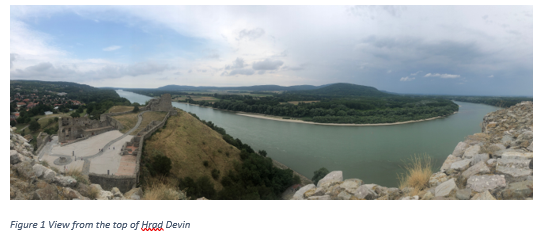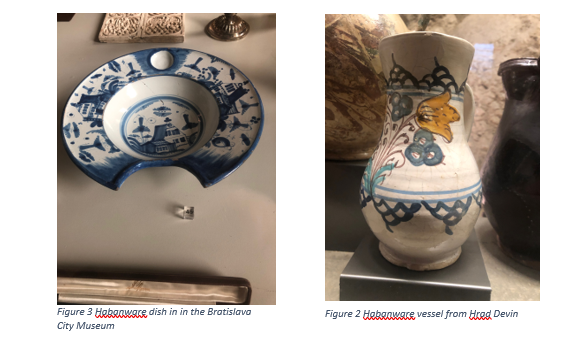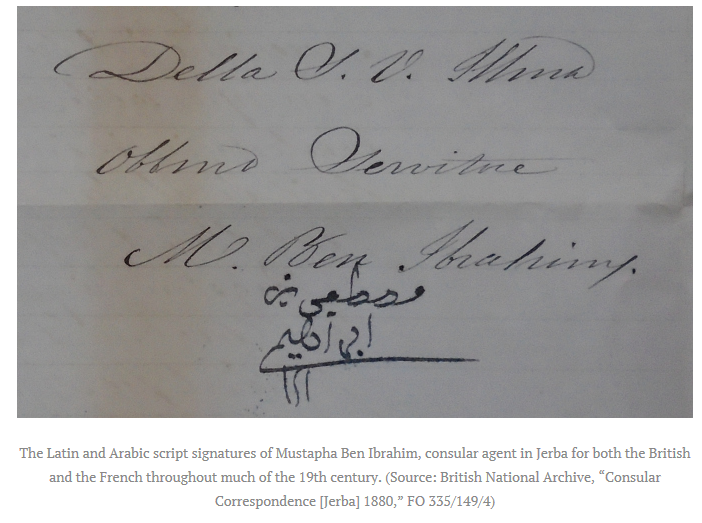 James Edward Baldwin
James Edward Baldwin
Royal Holloway, University of London, UK
James E. Baldwin is a lecturer in the History Department at Royal Holloway, University of London, and the author of Islamic Law and Empire in Ottoman Cairo (Edinburgh University Press, 2017). He previously taught at the University of Warwick, held a Leverhulme Trust Early Career Fellowship at Queen Mary, University of London, and held visiting fellowships at Harvard Law School and Koç University, Istanbul. He was awarded his PhD by New York University in 2010.
Mobile Archives in the Early Modern Ottoman Empire
The Ottoman Empire kept records scrupulously, and it left to historians a quantity of documentation unmatched by any other pre-modern Muslim state. But there are gaps in the Ottoman central and provincial archives, which resulted from the Ottoman practice of transporting parts of their archives to the frontline during sixteenth- and seventeenth-century wars, so that the business of government could be carried on from the camp. Some of the transported records were lost to plunder, first entering the Oriental curiosity collections of European aristocrats, before being donated to public research libraries by their descendants. I am using these collections to study Ottoman archiving practices, focusing on archives’ mobility. I am particularly interested in exploring the difference between central records, which were held within the institutions that produced them, and provincial records, which in some cases appear to have been held by individual officials who accumulated records from different postings as personal archives. Ottoman archives seem to have become less mobile during the eighteenth century, as the Ottoman government was increasingly dominated by bureaucratic rather than military officials. The Yale-Humboldt Grant will allow me to visit several libraries in western and central Europe with relevant collections.
Report and Updates
I used the grant to visit a number of libraries across Europe, some prominent and some obscure, looking for Ottoman archival records that had been plundered by European soldiers during the Ottoman-Habsburg wars of the 17th and 18th centuries. I visited the Bibliothèque universitaire des langues et civilisations in Paris (November), the Niedersächsische Staats- und Universitätsbibliothek in Göttingen (December), Utrecht University Library (January), the Haus- Hof- und Staatsarchiv in Vienna, which contains the library of the old imperial Oriental Academy (July), the Sächsische Landes-, Staats- und Universitätsbibliothek in Dresden and the Christian-Weise Bibliothek in the small, historic town of Zittau in eastern Germany (July-August). The purpose of these trips was both to obtain copies of the archival documents, and to research acquisition records to see if I could trace the documents’ ownership prior to donation. I will highlight a few interesting finds below.
BULAC in Paris holds several Ottoman registers. One, the accounts of an endowment made by an Ottoman princess in Cairo from 1682, is accompanied by an exchange of letters between the library and the donor, François de Saint-Just, from the 1980s. Saint-Just describes it as having been in his family for generations. The family is a prominent political family on the far right, with twentieth-century connections to the Middle East via the Lebanese Phalange. I’m researching the family’s history to try to figure out when and how the manuscript might have been acquired.
I went to Göttingen to examine two name-i hümayun registers, containing the Ottoman government’s outgoing correspondence with foreign rulers and vassals. On inspection, one of these appears to contain two texts re-bound together, both containing name-i hümayun but with different dates, so I am trying to figure out how and why it was assembled. Another register containing an Ottoman muster roll had an inscription on the inside cover recording its capture during the siege of Buda in 1684. I also found an enormous, beautifully illuminated scroll containing a firman to the Patriarch of Alexandria
In Utrecht I saw too volumes containing a large collection of loose official documents from the mid-eighteenth century. The library’s records show that it was purchased from a now-defunct antiquarian bookseller in Sussex, England in the 1970s. The bookseller published regular catalogues during this period, which are held by the Bodleian; I will consult them next time I visit Oxford to look for further details.
The state library in Dresden contained many useful items, including two şikayet registers, containing the imperial government’s responses to petitions from subjects, several registers containing revenue accounts, and some manuscripts with inscriptions recording their capture during the Ottoman-Habsburg war of 1683-99. Meanwhile at the Christian Weise library in Zittau, I saw a small collection of petitions, a firman and a fragment of an account register, donated by a townsman who brought them back from the war. Although a small library, its collection is meticulously documented. One of the dedicated librarians, Uwe Kahl, was enormously helpful, providing me with their unpublished manuscript catalogue in pdf and a copy of his published edition of original donation register, on which he had bookmarked the entries for the manuscripts I was reading.
During the past year I have also located relevant collections at several other libraries. I have ordered copies of some small collections or single items remotely, including a set of petitions from the Zentralbibliothek in Zürich and a sharīʿa court register from the Vatican. I am planning a few further trips during my upcoming sabbatical, including to view the Marsigli collection at the University of Bologna, and collections in Stuttgart and Wroclaw. I plan to write the article based on this material during the second half of this academic year.
 Norman Domeier
Norman Domeier
University of Stuttgart, Germany
Norman Domeier is Assistant Professor of Modern European History at the University of Stuttgart/Germany. He studied History, Political Science and Media and Communication in Göttingen, Cambridge and at the European University Institute in Florence, Italy. The English edition of his Ph.D thesis, ‘The Eulenburg Affair. A Cultural History of Politics in the German Empire’, was published by Boydell & Brewer in 2015. His second book project—the focus of his current work—looks at the relationship between foreign journalists and the Third Reich.
Secret Photos. The Cooperation between Associated Press (AP) and Nazi Germany 1942-1945
Surprisingly, historical research has until now largely ignored the activities of the accredited foreign correspondents in Berlin during the Third Reich. Instead it has focused almost exclusively on ‚the other side of journalism’, the state public relations and propaganda apparatus. New archival evidence from the papers of AP’s Berlin correspondent Louis P. Lochner found in 2017 reveals the existence of a secret German–American cooperation between Associated Press (AP) and the Bureau Laux, an agency of the SS and the German Foreign Office, during the war years 1942 to 1945. With the permission of the Roosevelt administration, AP and the Bureau Laux exchanged approximately 40,000 photographs by diplomatic pouch via Lisbon and Stockholm on a daily basis until spring 1945.
In Berlin, the AP photos were presented to Hitler and the highest Nazi leadership every day. They were then used by the German press for anti-American and anti-Semitic propaganda. Conversely, thousands of Nazi photos received by AP New York were printed in the American and international press. The photo exchange was probably the only channel of communication used everyday between these enemies during the Second World War.
My main aim is now to shed light on how the exchange worked via the neutral European capitals: Who were the people and institutions/companies involved in the photo trade? With the Humboldt Yale History Network Travel Grant, I want to reconstruct the role of the Swedish news agency „Pressens Bild“ in Stockholm.
Report and Updates
Thanks to the support of the Humboldt Yale History Network, I am in a position to extend my research on the secret collaboration of Associated Press [AP] and Nazi Germany 1942-45 to the Scandinavian countries, where much photo and news material was exchanged between the enemy powers. The neutral capital of Stockholm played a central role in this relationship.
This will pave the way to many surprising discoveries about the transatlantic and global intertwining of politics and media during the Second World War. It is becoming increasingly apparent how significant foreign correspondents, entirely ignored in scholarship to date, were as political actors.
For instance, NBC correspondent Max Jordan learned about plans for an invasion several days before the Wehrmacht marched into Denmark and Norway in April 1940. He passed this information on to American contacts in Copenhagen. It is likely that the Danish and Norwegian governments had been warned by him as well, but they did not undertake any notable counter-measures.
Current publication:
http://www.zeithistorische-forschungen.de/2-2017/id=5484
(English pdf version under „Translation“)
Publications
Norman Domeier, A Scream, then Silence. Kristallnacht and the American Journalists in Nazi Germany, in: CASDEN 17 (2019), ed. by Wolf Gruner and Steven J. Ross, pp. 164-186.
Norman Domeier, Secret Photos. The Cooperation of Associated Press (AP) and Nazi Germany 1942-1945, in: Zeithistorische Forschungen/Studies in Contemporary History 2/2017, pp. 199-230.http://www.zeithistorische-forschungen.de/2-2017/id=5484 (English version under ’translation’)
Norman Domeier, Schreibmaschinentäter im »Dritten Reich« und danach, in: Dirk Rose/Dirk van Laak (eds.), Schreibtischtäter: Begriff-Geschichte-Typologie, Göttingen 2018, pp. 179-190.
Norman Domeier, The Eulenburg Affair. A Cultural History of Politics in Imperial Germany (German History in Context 1), Rochester, New York 2015.
Norman Domeier, The Homosexual Scare and the Masculinisation of German Politics before the First World War, in: Central European History 47 (2014), pp. 737-759.
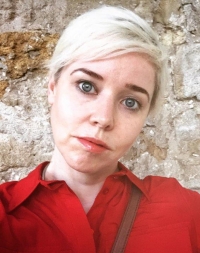 Chloë Duckworth
Chloë Duckworth
Newcastle University, UK
Dr Chloë N. Duckworth is a historical archaeologist and archaeological scientist, specialising in the production of glass and related pyrotechnologies in medieval southern Spain. She is a lecturer in Archaeological Materials Science at Newcastle University, UK, a Fellow of the Society of Antiquaries of London, and a board member of the Association for the History of Glass. Her work to date has combined history, science, and archaeology to address the social context of past technology, especially glass production. Prior to working in Newcastle, she was a British Academy Postdoctoral Fellow at the University of Leicester.
Glass Production, Environment, and Knowledge Transfer in Medieval Spain and Beyond.
Medieval Iberia had a pivotal role in the transfer of technology, science, and knowledge from the Islamic world to Europe, but very little research has investigated technological practice within Iberian societies, impoverishing our understanding of this process. This work will add fundamental archival research to an ongoing programme of scientific and archaeological analysis of the industrial production of glass from Late Antiquity to the medieval period. Archival evidence from the 13th to the 16th centuries in south-western Spain will be examined. The grant will cover the cost of travel to and within southern Spain, to spend four weeks examining public and private documents written in Castilian, the majority dating to the late 15th and 16th centuries.
It will shed much-needed light upon the use of local resources and the organisation of the glass industry in south-west Spain. Part of a larger programme of interdisciplinary research, it will examine glass production, its relationship with the natural environment, the identity of the glassmakers, and the relationship between glassmaking and the export of Spanish barilla, a salt-rich plant ash developed from local resources in the Iberian Peninsula, and traded widely throughout Europe by the late 16th century.
Report and Updates
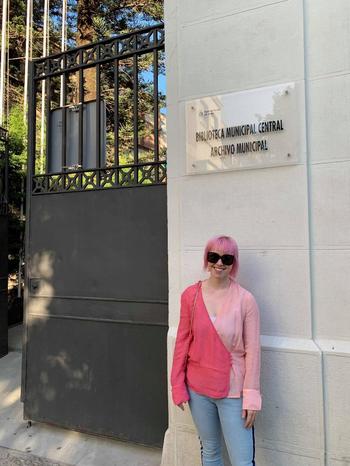 The research was conducted from the 5th to the 30th August, 2019 (with travel in late July and late August to early September). It took place in archives in Seville, Cordoba, and Jerez, including the examination of original documents and the use of digitized material (the majority of which can only be accessed by visiting the archives in question).
The research was conducted from the 5th to the 30th August, 2019 (with travel in late July and late August to early September). It took place in archives in Seville, Cordoba, and Jerez, including the examination of original documents and the use of digitized material (the majority of which can only be accessed by visiting the archives in question).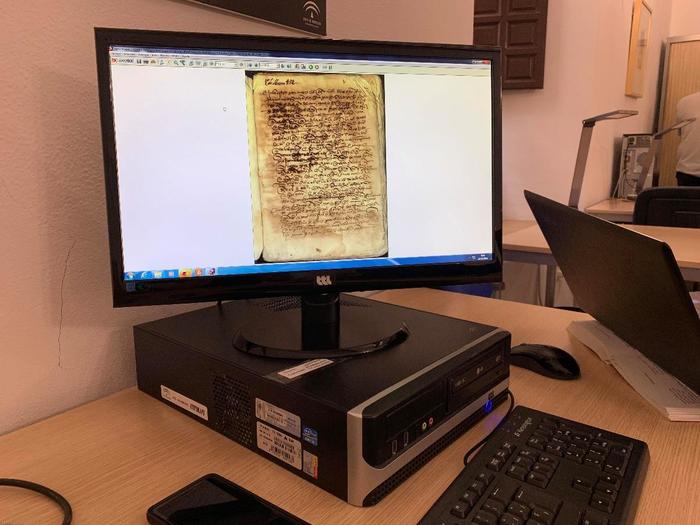 Two 15th century oficios, each the office of one notary public (archival numbers 14 and 18), were scrutinized for references to glass and glassmaking, and to the sale of barilla or other alkaline ash products. None were found, but a number of references to soapmaking – and to the alkalis used for this – were documented, including repeated references to members of a family (de Sosa) dealing in potash for the manufacture of liquid soap in Cordoba. Potash can also be used in glassmaking, and indeed several of the medieval Spanish glasses analysed to date have been found to contain elevated potash, so this is worthy of further attention.
Two 15th century oficios, each the office of one notary public (archival numbers 14 and 18), were scrutinized for references to glass and glassmaking, and to the sale of barilla or other alkaline ash products. None were found, but a number of references to soapmaking – and to the alkalis used for this – were documented, including repeated references to members of a family (de Sosa) dealing in potash for the manufacture of liquid soap in Cordoba. Potash can also be used in glassmaking, and indeed several of the medieval Spanish glasses analysed to date have been found to contain elevated potash, so this is worthy of further attention.
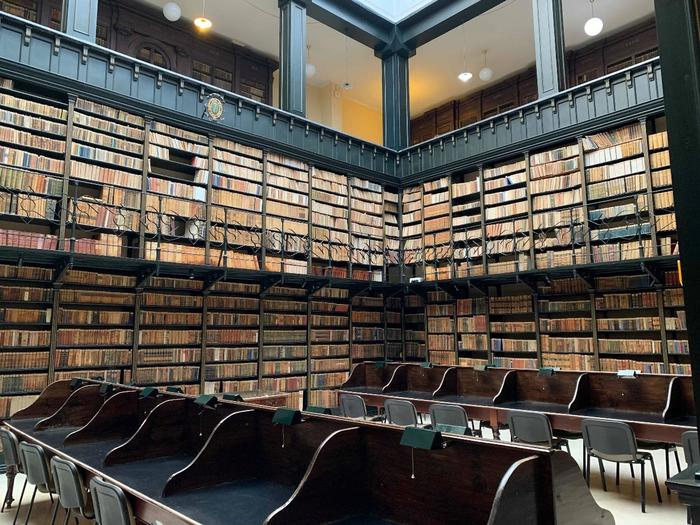
Discussion
Publications
Duckworth, CN and Wilson, A (in press) Reuse and Recycling in the Roman Economy. Oxford Studies on the Roman Economy. Oxford University Press.
Duckworth, CN, Cordoba, R, Faber, EW and Govantes Edwards, DJ (2015) ‘Electron microprobe analysis of 9th-12th century Islamic glass from Córdoba, Spain’. Archaeometry 57 (1): 27-50.
Duckworth, CN (2012) ‘Imitation, artificiality and creation: the colour and perception of the earliest glass in New Kingdom Egypt’. Cambridge Archaeological Journal 22 (3): 309-27.
Mattingly, DJ, Leitch, V, Duckworth, CN, Cuenod, A, Sterry, M. and Cole, F (2017) Trade in the Ancient Sahara and Beyond. Cambridge University Press.
 Erica Feild
Erica Feild
New York University, USA
Erica Feild holds a BA Spanish and French, Seattle University (2011), an MA Arab and Hebrew Cultures: Past and Present, Universidad de Granada (2013), and an MA Translation, Universidad de Zaragoza (2014). She is a PhD candidate in the Department of Spanish and Portuguese at New York University. Her research focuses on the representations of Muslims and moriscos in the Spanish Empire (from Spain to the Philippines) and the construction of racial categories. She approaches her work with insight from literary studies, history of race, social and intellectual history, global history and archival theory.
Imagining moros from Granada to Manila
An astute scholar recently observed, “Like the term ‘Oriental,’ the word ‘Moor’ tells us more about the person who uses it than it does about the thing it supposedly describes. It is thus best understood as a category of the Spanish imagination[.]” (Calderwood 2018) Following Calderwood, this project examines how Spanish officials and intellectuals depicted moros (Moors), moriscos (Iberian Muslims who converted to Christianity), and other individuals identified as turcos, berberiscos, mahometanos (Turks, Berbers, and Mahometans). The terms I just listed were employed imprecisely across the Spanish Empire to refer to Muslims (though morisco also came to denote mixed parentage in colonial Mexico). Yet, they are characterized by striking instability: they slip between geographical and religious markers of difference. My research asks whether, and how, the slipperiness of these terms played a rhetorical role in the how Spaniards imagined and represented the individuals upon whom they were imposed. My approach cuts across genres to analyze depictions of Muslims in a range of texts from Spain and New Spain (c.1550-c.1750): novels, chronicles, geographies, royal decrees, trial records, and correspondence between officials. Funding from the Humboldt Yale History Network supports archival research in Andalucía to expand the body of texts for analysis.
Report and Updates
1. I gave a presentation of perspectives that I developed during the grant period at the conference Rebelión de los andalusíes en las Alpujarras al sur de Granada: de factores a consecuencias which was held this past February at University Mohamed VI in Casablanca. My presentation, “ ‘Morisca en la voz?’: Las ideologías lingüísticas en las representaciones de los moriscos,” will be published in the forthcoming conference actas, coordinated by Mohamed Reda Boudchar.
2. The Yale Humboldt History Network Travel Grant supported archival research in Seville and Granada, Spain from September 8, 2018 to November 21, 2018. Over the grant period, I consulted a variety of archives in the above-mentioned cities and made important connections with local scholars that will be helpful contacts as I move forward. In particular, while in Seville, I met historian Manuel Herrero Sánchez, who has since invited me to be part of his early modern research group at the Universidad Pablo Olavide. I plan to spend several months of the coming academic year in Seville and am grateful that I will have a home-base among an active group of scholars who share interest in topics related to my research. Also while in Seville, in association with the research group, I will have the opportunity to present and receive feedback on developments in my project. Furthermore, I am currently developing a dissertation chapter that examines discussions and representations of slavery in a number of sixteenth-century histories, poems, and chronicles that depict military conflicts between Spaniards and “Moorish” ormorisco opponents at different locations in the Spanish Empire. Several documents that I located at the Archivo General de Indias in Seville shed light on specific concerns and argumentative strategies of colonial Spanish officials and will play a role in how I develop the historical context in question, and perhaps contribute to the central argument of the chapter.
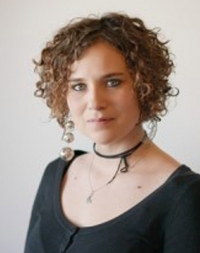 Lisa Hellman
Lisa Hellman
Freie Universität Berlin, Germany
Lisa Hellman is a postdoctoral scholar at the Graduate School Intellectual Global History at Freie Universität Berlin, but formerly worked at Stockholm University and University of Tokyo. She has recently published the book “This house is not a home: European everyday life in Canton and Macao 1730–1830” with Brill. She works in the intersection between cultural, maritime and global history, with a special focus on gender relations. Her regional focus is on early modern Central and East Asia, and she has published in five languages about how intercultural interaction changed the lives of the men and women involved.
Connections in Shackles: Swedish prisoners of War in the Central Asian Borderlands 1700–1740
This project examines circulation of knowledge in the Central Asian borderlands 1700–1730. At this time, Russia and China west clashed with Dzungaria. Simultaneously, over twenty thousand Swedish men and women were taken as prisoners of war as an effect of the Great Northern War (1700–1721). The majority of these prisoners were removed from the Western front, and employed in the Russian expansion eastwards, some of them ending up in the Qing and the Dzungar empire, and some in the Central Asian borderlands between them. Officially labelled prisoners or slaves, these Swedes were put to work as craftspersons, technical experts and map-makers, but also formed part of diplomatic missions and the local economy. Unfree but mobile, the prisoners offer an unusual opportunity to explore the intercultural contacts and empire building in early 18th century Central Asia. Tracing the prisoners through Swedish, Chinese and Russian sources offers insights first into the borderland circulation of knowledge and, second, into the role of displaced people in that process of globalisation. This particular trip is intended for the gathering of material from the Russian administration for prisoners of war, as well as diplomatic letters and reports.
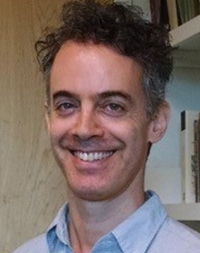 Daniel Hershenzon
Daniel Hershenzon
University of Connecticut, USA
Daniel Hershenzon is an Associate Professor in the Department of Literatures, Cultures, and Languages at the University of Connecticut. He is the author of “The Captive Sea: Slavery, Communication, and Commerce in Early Modern Spain and the Mediterranean.” (University of Pennsylvania)
Captive-Objects: Material Culture and Piracy in the Early Modern Mediterranean
This project explores the trajectories of religious objects and manuscripts in the early modern Mediterranean and how they intervened in the plunder economy and in human trafficking. Between 1581 (the Spanish-Ottoman truce) and 1708 (the Algerian conquest of Spanish Oran) religious artifacts—Korans and Bibles, and pictures of Christ and the Virgin—circulated in the thousands in the western half of the sea, crisscrossing religious and political boundaries. This mobility, which was largely a byproduct of piracy, took three forms. First, objects were shipped to captives to help them endure the trials of captivity without converting to their captors’ confession. Second, some Maghribi rulers looted religious pictures and sculptures from Christian captives’ churches, and Spanish kings and captives later negotiated these images’ redemption. Third, Jewish and Muslim religious manuscripts fell prey to maritime piracy and were taken captive; their owners subsequently negotiated their restitution. In all cases, members of the religious groups to which the objects pertained made enormous efforts to redeem them, willing to provide hefty ransoms to that end. These objects’ paths, shifting meanings, and functions are key to understanding violent interactions across the early modern Mediterranean.
Report and Updates
The Humboldt Yale History Network Travel Grant assisted in carrying out three weeks of research in Spain for my new book project, Captive Objects: Religious Artifacts, Piracy, and Slavery in the Early Modern Mediterranean, in June 2019. I divided my time between Madrid, where I researched the Inquisition and Estado sections of the AHN (Archivo histórico Nacional), and Simancas, where I researched the Guerra y Marina and Estado sections of the AGS (General Archive of Simancas). The materials I found would form the core of the project’s last chapter on an 18th century mosque that was active in Cartagena for nearly four decades in the service of bonded and manumitted Muslim slaves. The records I found record Christian opposition to the mosque as well as Algerian diplomatic support of it. In several instances, Christian residents and the local authorities molested the Muslim believers or broke in the mosque snatching the lamps they found there. In their response to such instances, the Algerian authorities threatened to shut the churches of Christians enslaved in Algiers and break the devotional images and bells they would find in the churches. Thus, the violence against the mosque stood at the heart of a dynamic of challenge and riposte on a Mediterranean scale involving Spain and Algiers, while simultaneously evoking long-term historical discourses that go back to Medieval Iberia and numerous instances in which Muslims stole church bells turning them into mosque lamps, and Christians broke mosque lamps. In addition to a city map indicating the mosque’ precise location and its floor plan, the documents I found include a, and debates among the Algerian authorities, the Moroccan Sultan, and the King of Spain, as well as the Inquisition and the municipal authorities.
Additionally, I managed to continue researching for the second chapter of the book that focuses on Christian devotional objects captured by Muslims and later redeemed. In a previous research trip I found evidence of another such object at the Palace Archive in Madrid. According to the records I found, the Virgin’s statue (redeemed from Algiers in 1739), was held in the enclosed part of the Convent of las Descalzas Reales in Madrid. I met with Ana García Sanz, the curator of the convent who works for the Spanish National Heritage Office, who provided access to the statue and facilitated its photographing.
Finally, the grant allowed me to maintain and establish new valuable academic contacts with colleagues at the National Research Council (CSIC), the Complutense University of Madrid (UCM) as well as with colleagues from the US, France, and Italy, whom I met in the archives. These formal and informal encounters proved extremely helpful, as I was able to discuss my project, receive valuable advice, updates about recent publications, especially such that are hard to access in the US, and numerous archival leads.
Publications
The Captive Sea: Slavery, Communication, and Commerce in Early Modern Spain and the Mediterranean, (University of Pennsylvania Press, 2018).
“Doing Things with Arabic in the 17th Century Escorial,” Philological Encounters 4 (2019): 159-181.
“The Political Economy of Ransom in the Early Modern Mediterranean,” Past and Present 231 (2016): 61-95.
“Towards a Connected History of Bondage in the Mediterranean: Recent Trends in the Field,” History Compass 15-8 (2017): 1-13.
“Traveling Libraries: the Arabic Manuscripts of Muley Zidan and the Escorial Library,” Journal of Early Modern History, 18 (2014): 535-558.
 Katherine Hill
Katherine Hill
Birkbeck College, University of London, UK
I am a Lecturer in Early Modern History at Birkbeck and work on religion, identity and culture in the early modern world. I studied at the University of Oxford, where I was also a British Academy Post-Doctoral scholar. I have published articles and a monograph on Anabaptist identities in the Reformation era, and my recent research on Lutheran culture after Luther’s death resulted in a Past and Present volume. My current research examines groups such as the Mennonites and Hutterites in the early modern world as they formed new communities, faced exile or migrated, and constructed identities in transnational contexts.
Diasporic Materialities: Dispersed Afterlives of Global Anabaptism in the Early Modern World
My project focuses on migration and material cultures in Anabaptist diasporas. It will uncover how materialities sustained communal identity, embodying memory and emotion for groups in flux as they migrated. My proposed research follows the material remnants of groups evolving from the Anabaptists tradition across national boundaries and examines material global stories that connected communities across space and time. These mobile groups migrated rom the Netherlands and Germany to Poland and eastern Europe, the Ukraine and Russia, and then in the last 150 years to north and south America. The project will examine diverse aspects of material culture: the materiality of records and membership books; the Kroeger clocks of Vistula delta Mennonites; ceramics produced by Hutterite communities; furniture, clothes, and domestic items; and cemeteries and burial sites. Material culture presents a particularly interesting research problem in the Anabaptist tradition since communities eschewed excessively decorative forms, and objects were often made specifically for the community’s own use. As groups migrated, distinctive objects, forms of expression and skills formed a connection across space and time. This research will examine how materialities became repositories of emotional, familial and communal bonds in the face of dispersion, and investigate contemporary legacies of these material cultures.
Report and Updates
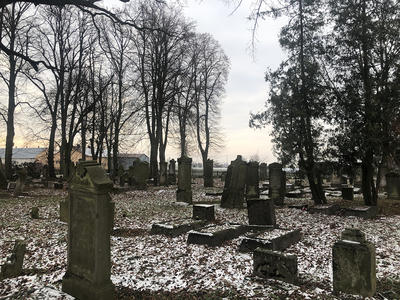
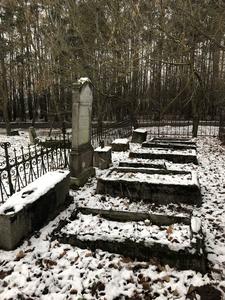
In December, a week before Christmas, I made a trip to northern Poland to embark on a tour of the Mennonite cemeteries of the Vistula delta region. Flying into a very snowy Gdansk, I spent the next few days driving round isolated graveyards in the countryside which had once been the location the of Mennonite congregations. Mennonites migrated from the Netherlands to Polish Prussia from the sixteenth century onwards. These communities have all since abandoned the area but visiting these desolate material reminders of Mennonite presence has transformed my research. First, it has allowed me to think in novel ways about the nature of space and landscape amongst these communities. The cemeteries were often located outside the villages, emphasizing the separation of the Mennonites, whilst the distance between these congregations underscored the importance of personal networks of travel and familial connection which linked Mennonites across the Vistula delta. The landscape itself has also been shaped by their presence, for Mennonites were instrumental in draining the land for farming. Second, it has opened up new avenues onto the role of material culture in shaping Mennonite identities. Graves and headstones are material markers of presence and memory. The organization of burials reveal the nature of the community’s views on life after death, but it also indicates the way in which material objects expressed and negotiated emotional lives. For example, there are evocative graves of children, who were not yet baptized into these communities which believed in adult baptism, shaped as cut off tree stumps. Finally, it has enrichened my understanding of the role of memory in binding together these global early modern communities of dispersion. The space of the Vistula delta holds an important place in the memories of communities now in north America and there is evidence of continued interaction with these places, in the form of flowers and notes left on graves, as well as projects to restore some cemeteries.
In addition to research tips to the cemeteries, I also visited heritage institutions which have collections relevant to my research. This included the magnificent castle of the Teutonic knights in Malbork which has rich archives and also collected headstones from various Mennonite cemeteries, now relocated and housed outside alongside other headstones from various periods. I also visited the Muzeum Żuławskie at the Żuławski Park Historyczny. This has a collection and permanent exhibition of Mennonite culture in the Vistula delta region which has enriched my understanding of their history in the region. This trip also allowed me to make connections with the curators and researchers there, which will hopefully lead to a collaboration.
Publications (all planned)
A paper to be submitted to History Workshop Journal or the Journal of Material Culture on material culture, memory and emotions amongst Mennonites, following a paper given at the Manchester series, ‘Affective Artefacts’
A short blog piece for the ‘Affective Artefacts’ blog
A chapter in my forthcoming monograph on Mennonite identities in the early modern world.
Hutterite remnants
At the height of Hrad Devin just outside Bratislava is a small museum tucked into the ruins of the castle which tells the history of the fortification. One of the more surprising objects on display is a white faience vessel decorated in colourful floral motifs of green, yellow and blue. Perhaps not the most obvious object to cause excitement, I was thrilled to see it, for this is the unmistakable design associated with Habanware, the ceramics produced by Hutterites in central Europe from the sixteenth to eighteenth centuries.
In a whirlwind trip across some of the great cities of central Europe this summer, I followed the material worlds of Hutterites, non-conformist groups who emerged from the Anabaptist tradition. In the main, this meant following traces of the production, sale and survival of Habanware which became a prized commodity amongst the nobility of early modern central Europe, and which now is sought after by ceramic collectors. I travelled to Prague, Vienna, Bratislava and Budapest, visiting museums, libraries and heritage centres which contained records and traces of these material records: the Museum of Decorative and Applied Arts and the Ethnographic Museum in Prague; the Museum of Applied Arts and the Volkskunde Museum in Vienna; the Bratislava City Museum, the Slovak National Museum and Hrad Devin in Bratislava; and the Budapest History Museum and Hungarian National Museum in Budapest. Other institutions in Budapest with relevant collections are closed for redevelopment.
Journeying across the terrain in itself gave me a sense of how and where these communities lived, worshipped and settled and my visits allowed me access to objects and written materials unavailable in the UK. The collections are much more extensive than I realized and much more spread out and speak to the importance of Hutterite narratives in our histories of early modern central Europe as well as the need to situate these communities in these locations. In surprising places such as Hrad Devin, I found examples of Habanware. Indeed, in most ethnographic and local museums in these cities there are vessels and items belonging to the Hutterite tradition. Putting these collections together, therefore, has allowed me to construct a comprehensive map of the spread of Hutterites communities and their material and economic networks in central Europe from the 16th to 18th centuries. Many further collections and archaeological sites in Slovakia, Hungary and Romania are yet to be explored which will yield further insights into the nature of Hutterite life. It also allowed me to access to texts and documents, both research by central European scholars and primary material (yet to be fully explored) in the archives of the Catholic bishopric in Esztergom on the Hungarian border.

The two trips undertaken for this project – the visit to Poland and this tour of central Europe – have revealed whole new dimensions to the study of Anabaptist traditions in the global early modern and beyond, where material pasts can be a way of examining identity, community and dispersion.
Publications
‘Mapping the Memory of Luther: Place and Confessional Identity in the Later Reformation’, German History, forthcoming 2020.
‘Memories from the Margins? Anniversaries, Anabaptists and rethinking Reformations’, article for Palgrave Communications 5 (2019) and reprinted in Mennonite Quarterly Review (October, 2019)
‘Making Lutherans’, Cultures of Lutheranism: Reformation Repertoires in the Early Modern Era, ed. Kat Hill (OUP: Past and Present Supplement 12, 2017), 9-32
Fun and loathing in later Lutheran culture’, in Cultures of Lutheranism: Reformation Repertoires in the Early Modern Era, ed. Kat Hill (Oxford: Oxford University Press: Past and Present Supplement, 2017), 67-89
‘The Power of Names: Radical Identities in the Reformation Era’ in Bridget Heal and Anorthe Kremer (eds), Radicalism and Dissent in the World of Protestant Reform (Vandenhoeck and Ruprecht: Göttingen, 2017), 53-70.
Baptism Brotherhood and Belief in Reformation Germany: Anabaptism and Lutheranism, 1525-1585 (Oxford Historical Monographs Series, OUP: Oxford, 2015)
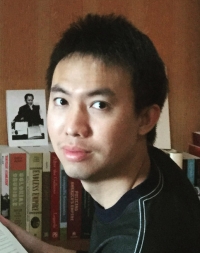 Arthit Jiamrattanyoo
Arthit Jiamrattanyoo
University of Washington, USA
Arthit Jiamrattanyoo is a doctoral candidate in the Department of History, University of Washington, Seattle. He has been granted a scholarship for his graduate studies from Queen Sirikit of Thailand and was also awarded the Usha Mahajani Memorial Prize in 2012 for the most outstanding graduate student at the University of Wisconsin-Madison’s Southeast Asian Studies Summer Institute, where he started learning Tagalog. His areas of interest include Southeast Asian history (especially Thai and Filipino histories), history of emotions and the senses, literary and cultural theory, affect studies, and translation studies. He is based in Bangkok and Seattle.
Empire of Amity: Affective Politics and Poetics of Friendship in the Spanish Philippines
My project examines trans/imperial and transnational histories of friendship in the contexts of Philippine colonial domination, endurance, and resistance during the Spanish era. Drawing upon the notion of friendship as a mode of intimate experience and a set of affective, bodily, and discursive practices—it explores the ways in which friendship was forged within and across sociocultural boundaries and implicated in the colonial politics of the Philippines under Spain. In so doing, it looks specifically at the cultural production of amity, especially in written forms, which constituted a “poetics of friendship” and a testimonial archive of the social and emotional self in which experiences and imaginations of friendship were registered. My project moves beyond the metropole-colony axis by bringing to light intra-imperial friendships in conjunction with transimperial ones made through the Philippines. By the preposition “through,” I suggest that the colonial Philippines served as a condition of possibility for friend-making that did not necessarily occur in the archipelago, but nonetheless mobilized it as a point of reference for affective attachments and articulations. My particular research focus in Spain under the Humboldt Yale History Network Travel Grant will be on the transimperial politics of friendship between Spain, Portugal, and the East Indies in the early period of Iberian imperial expansions in Southeast Asia.
Report and Updates
Under the generous support of the Humboldt-Yale History Network Travel Grant, I have recently finished my archival research at the Biblioteca Nacional de España (BNE) in Madrid and the Archivo General de Indias (AGI) in Seville. As a generally acknowledged fact in the field of Philippine studies, vernacular records in the Philippines before the nineteenth century are very scarce and scattered. And although historians of the Philippines such as Vicente Rafael and Damon Woods have illustratively drawn upon some of the extant Tagalog documents in their respective research, many of them are yet to be discovered and examined. Fortunately, the grant enabled me to access a huge collection of Philippine vernacular books and manuscripts at the BNE, some of which pertain to my project on the politics of friendship in early Spanish-Philippine encounters and cannot be found elsewhere. A Tagalog-Castilian dictionary, for example, provides a list of indigenous terms related to friendship whereas a Tagalog confessional manual hints at the Catholic conception of God as Friend. A predominant number of the documents are devotional literature written by Spanish missionaries and published by Catholic institutions, which pose a challenge to my dissertation project as to how these evangelical texts should be interpreted and how they might have been understood by native converts.
In addition, the grant allowed me to embark on another archival journey to the AGI, where I was able to locate correspondences and bureaucratic records related to the relationships between Spaniards and Muslim natives in the southern Philippines as well as friendships across the colonial axis in the archipelago. Despite its relative dearth of Philippine vernacular documents, the AGI provided me with valuable sources in reconstructing the early history of Spanish imperialism in the East Indies, especially when imperial ideologies and debates were much in flux. I am now writing a dissertation chapter on the concept of friendship in Hispanic imperial thought, drawing upon archival sources from my Spain trip, among others. It would have been a much less immersive historical project without the indispensable assistance of the Humboldt-Yale Travel Grant.
 Hyeok Hweon Kang
Hyeok Hweon Kang
Washington University in St. Louis/Johns Hopkins University
Hyeok Hweon Kang is a historian of Korea and East Asia specializing in the history of science, history of technology, and global history. His current book project, “The Skillful Mind: Artisanal Empiricism and the Culture of Making in Early Modern Korea,” examines the artisans and practitioners of Chosŏn (1392–1910), with a focus on their workshop culture, knowledge practices, and interaction with “early modern things.” His works can also be found on the Military Revolution, a debate about the rise of Europe in world history, as well as on the history of music, ritual, and performance. He earned his PhD in History and East Asian Languages from Harvard University in 2020, and is currently a Visiting Scholar and D. Kim Postdoctoral Fellow in the History of Science and Technology Department, Johns Hopkins University. In Fall 2021, he will begin as Assistant Professor in the Department of East Asian Languages and Cultures, Washington University in St. Louis.
How did Europe—once a backwater of world history—rise to sudden global dominance in the early modern period
Recent scholarship on the “rise of the West” has expanded in scope to military matters, and historians have debated the origins of the “Great Military Divergence.” On one side, traditionalists argue that Europe experienced more sustained innovations in “gunpowder technologies.” On the other, revisionists refute that developed areas of Eurasia—especially East Asia—were just as capable and vigorous in deploying the same technologies. Valuable as this debate is, historians have not understood the social and cultural context of technology before subjecting it to comparative analyses. My project addresses this lack by recognizing gunpowder technology as a core element in the rise of a distinctive sociotechnical system endemic to the early modern period. Guns and gunpowder, I argue, were material artifacts around which crystallized new ways of assimilating technical knowledge, mobilizing society, and extracting materiel. With the Humboldt Yale History Network Grant, I will put this theory to a test of field research, and investigate European variations on the theme. This research will, in turn, lay the global comparative framework for my dissertation, which brings the neglected case of Chosŏn Korea (1392–1910) and early modern East Asia to bear on this globalist discourse
Report and Updates
1. I have a forthcoming book chapter which was possible thanks to the Humboldt Yale History Network Grant: “Difference or Divergence? Technology and the Global Military Revolution,” in The Military Revolution and Revolutions in Military Affairs, ed. Mark C. Fissel (Under review by De Gruyter as part of a Global Intellectual History series).
2. Being part of the Humboldt Yale History Network has been a great boon to my research interests in global and comparative history. As a specialist in Korea and East Asia, I am especially grateful to have the opportunity to work in Western European archives and museums and join a network of scholars whose research is anchored there. This grant has allowed me to continue work on a forthcoming book chapter and bring new insights and directions into my dissertation.
Publications
“Divergence in an Age of Parity: Europe, East Asia and the Musket in Global Military History” in The Military Revolution and Revolutions in Military Affairs, ed. Mark C. Fissel (Berlin; New York: De Gruyter, forthcoming).
“A Korean Military Revolution? Parallel Military Innovations in East Asia and Europe,” Journal of World History 25.1 (March 2014): 51-84 (Co-authored with Tonio Andrade and Kirsten Cooper). DOI: 10.1353/jwh.2014.0000
“Big Heads and Buddhist Demons: The Korean Musketry Revolution and the Northern Expeditions of 1654 and 1658,” Journal of Chinese Military History 2.2 (December 2013): 127-189. DOI: 10.1163/22127453-12341256
 Sean Lawrence
Sean Lawrence
University of California Santa Cruz, USA
Sean Lawrence is a Ph.D. Candidate in the Department of History at the University of California, Santa Cruz. He is interested in the intersection of international finance, politics, and environment in Europe and the Middle East. Sean received his Bachelor of Science from Santa Clara University where he studied Arabic before pursuing his first M.A. in World Heritage Studies at Brandenburg University of Technology in Cottbus, Germany. After starting his Ph.D. in 2014, his research has focused on the history and politics of water infrastructure as capital flowed from Germany into the late Ottoman Empire and early Turkish Republic.
What do you suppose this rain is worth?”: Agriculture, capital, and political ecology in central Anatolia, 1903-1945
In 1903 Germany’s largest multinational corporation, Deutsche Bank, began collaborating with Ottoman authorities to radically alter the physical geography of water in central Anatolia. Drawn by the promise of some of the world’s richest soil and dreams of reclaiming the literal “Garden of Eden” in the Fertile Crescent, German financiers sought to inscribe Anatolia’s steppe frontier with one of the seals of European modernity: systematic, engineered water channels encouraging settlement across previously fallow plains. Irrigation boosted agricultural productivity from three- to eight-fold over traditional dry farming thus ensuring a steady flow of export-oriented crops– cotton in particular– wherever it was implemented. Eventually this “modern” irrigation network transformed the physical, economic and social landscape of south-central Anatolia and redefined the region’s relationship to its central government, first in Istanbul and later Ankara. My dissertation weaves together the historical literatures of rural environments and capitalism in the Ottoman and Turkish Middle East, as well as literatures of rural identity in Turkey and of the economic expansion of European multinationals.
Report and Updates
Humboldt-Yale History Network Travel Grant Contribution to research:
With the support of the Humboldt-Yale History Network Travel Grant I was able to make two research trips to Istanbul, Turkey, where I had the opportunity to consult little-known archival sources that have filled critical gaps in my dissertation research. As my work focuses on the social, environmental, and political consequences of Germany’s financial investments in Ottoman agriculture, success depends on my ability to draw from a wide variety of sources and perspectives. The Grant has allowed me to do this by bringing non-state and non-official French and Turkish materials into my project. In Istanbul I was able to work for several weeks on the collections of SALT Galata and those of the Institut Français d’Études Anatoliennes and to return to the Başbakanlık Osmanlı Arşivi (Ottoman Archives) to examine important files that were unknown to me before receiving the Grant. In the Ottoman Archives I was able to examine the official file of Ferit Paşa, governor of Konya between 1898 and 1902 and files relating to the Deutsche Bank’s irrigation of the Konya plain.[1] SALT Galata houses, among numerous other useful documents and collections, the archives of the Ottoman Bank and several German-Ottoman trade publications. The Ottoman Bank archive includes correspondences between bank representatives and various Ottoman officials pertaining to irrigation works as well as the Bank’s reports on agricultural tithes in Konya and Adana. Finally, at the Institut Français d’Études Anatoliennes, I examined a handful of primary sources, mainly books written by travelers and irrigation “experts” relating to the environment of Anatolia and agricultural opportunities understood by Europeans to be present there.[2]
Thanks to the support of the Humboldt-Yale History Network I have been able to finish the archival research necessary for my doctoral dissertation. I will present parts of this research at the forthcoming annual conference of the American Society for Environmental History in Columbus, Ohio and the annual conference of he European Society for Environmental History in Talinn, Estonia. As the dynamic panels in which I will take part make clear, emerging environmental perspectives are integral to a fuller understanding of Ottoman History, transnational histories of capitalism, and the historical relations between the Middle East and Europe. As my research sits at the intersection of these fields, the Humboldt-Yale travel grant has been indispensable in giving my research the depth of source materials that these subjects deserve.
[1] Başbakanlık Osmanlı Arşivi (BOA), BOA. DH.SAÎD 4/346; BOA. Y. A.RES. 29. M.1326, 153/109. Konya Vilayet –i Salnamesi (KVS) H. 1317
[2] S.G. Marghetitch, Etude sur les chemins de fer de l’Empire Ottoman : Aperçu historique, financier, technique et commercial (1894); Wilhelm Von Pressel, Les chemins de fer en Turquie d’Asie : Projet d’un réseau complet (1902)
 Paul Love
Paul Love
Al Akhawayn University, Morocco
Paul Love is assistant professor of North African, Middle Eastern, and Islamic Studies at Al Akhawayn University in Ifrane, Morocco. He holds a PhD in Near Eastern Studies from the University of Michigan. His first book, Ibadi Muslims of North Africa: Manuscripts Mobilization, and the Making of a Written Tradition (Cambridge University Press, 2018), is a historical study of the formation of an Ibadi tradition in the Maghrib. His research interests focus on the history of Northern Africa, Arabic manuscript traditions in the Maghrib, and the intersections of colonialism and manuscript collections in northern Africa.
The Buffalo Agency: Ibadi Muslims in late-Ottoman Cairo through British Sources
This project explores the history of an Ibadi Muslim trade agency, school, and library known as the “Buffalo Agency” (Wikālat al-jāmūs) that operated in Cairo, Egypt, from the 17th to the 20th centuries. The story of the Buffalo Agency is one of transregional commerce, far-flung intellectual networks, and the unexpected cosmopolitanism of a minority religious community in Ottoman-era Egypt. The founders as well as many of the students and scholars who passed through the Buffalo Agency in these centuries came originally from the island of Jerba in what is today Tunisia, whose inhabitants maintained a special connection to the Agency over its long history. Jerban scholars or merchants regularly traveled to Cairo and often stayed at the Buffalo Agency for years or even decades before returning home.
I will use my Humboldt Yale History Network Travel Grant to explore evidence for this back and forth movement of Ibadi Muslims between Jerba and Cairo in the British National Archives. The British operated a consulate in Jerba from the 18th century before occupying Egypt at the end of the 19th century. During my grant period, I will be examining files related to the British consulate in Jerba over these two centuries, in search of traces of the Buffalo Agency in the form of individuals or groups traveling to or from Cairo.
Report and Updates
Jerba in European Archives: The Ben Ibrahim Family & the Consulates of France and Britain in the 19th century | جربة في الأرشيفات الأوروبية: عائلة “بن إبراهيم” وقنصليات فرنسا وبريطانية في القرن التاسع عشر
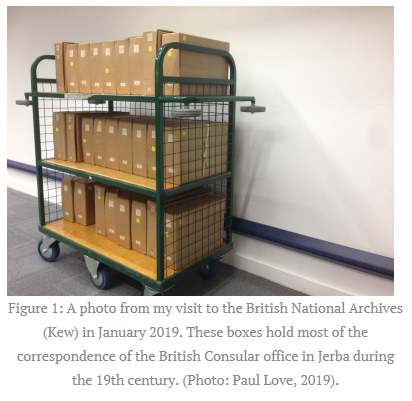
The British consular correspondence of the 19th-century Jerba at Kew comprises hundreds of letters (See Figure 1), most of which are connected to one family in Jerba: the Ben Ibrahim family. Mustapha Ben Ibrahim, the British consular agent in Jerba for much of the 19th century, wrote most of his letters addressed to the British Consulate in Tunis (the Jerba office was an annex). He wrote most of these in Italian, usually signing only his name in Arabic at the end of the letters (See Figure 2). In other cases, however, he translated (or transcribed) letters of complaint or other miscellaneous things in Arabic.
Mustapha served as the consular agent for decades, retiring only at the age of 98 in the year 1879. His grandson, Ahmed Ben Ibrahim, took over his responsibilities shortly thereafter. This long term of service turned out to be even more remarkable because the same Mustapha Ben Ibrahim (and his grandson after him) worked simultaneously as both the British and the French consular officer in Jerba.
Among the first documents I read here in Nantes were consular correspondence from the late-19th century, and the very first page of the folder on Jerba (See Figure 3) was a newspaper clipping noting the death on 21 March 1883 of the faithful consular agent to the French in Jerba, Mustapha Ben Ibrahim, at the age of 103. His funerary services, the clip reads, were attended by almost everyone on the island.
Moreover, it was Mustapha’s grandson Ahmed who had temporarily succeeded him as the consular agent for France. When Ahmed was appointed “Khalifa” of Jerba (a title and post connected to the central government in Tunis) in 1883, he had to be replaced since the two functions could not be held simultaneously. The solution: the French moved to appoint Mahmoud Ben Ibrahim, Ahmed’s brother, as the new consular agent. [1]
I haven’t yet found anything related to Ibadis in the Ben Brahim correspondence. But I love this story because of what it reveals about the context of 19th-century Jerba. The Ben Ibrahim family was working for two European consulates at the same time, which I suspect was not uncommon in small posts like Jerba. They were known across the island by Europeans and Jerbans, and they were producing their correspondence in French, Italian, and Arabic.
The Jerba where Ibadis lived in the 19th century was remarkably cosmopolitan. It had links to other Ibadi centers like Mzab, Jebel Nafusa, Oman, and Zanzibar as well as to its Jerban (Ibadi and Maliki) diasporas in cities like Alexandria, Cairo, and Istanbul. What the Ben Ibrahim family demonstrates is that we should not forget to add links to imperial European capitals like London and Paris. Even if Ibadis don’t show up in the correspondence, it is worth reflecting on what these letters reveal about the world in which Ibadis of the 19th century Mediterranean operated.
أقوم هذا الأسبوع بالبحث في الأرشيف الديبلوماسي الفرنسي في مدينة نانت، حيث أبحث عن روابط بين الجماعة الإباضية بجربة وبالقاهرة خلال القرن التاسع عشر. قمت برحلة متشابهة في شهر جانفي عندما زرت الأرشيف الوطني البريطاني (“كيو”) حيث ركّزت على مراسلات للقنصلية البريطانية في جربة. سأكتب أكثر عن محتويات هذه الوثائق ولكني أردت أن أكتب اليوم حول رابط غير متوقع. هذا الرابط ليس بين جربة والقاهرة بل هو رابط بين قنصليتَيْ بريطانية وفرنسا في جربة
تشمل مراسلات مكتب القنصلية البريطانية المحلية في جربة صناديق كثيرة (انظر صورة ١) وأكثرية المراسلات في القرن التاسع عشر كتبها أفراد عائلة واحدة في جربة: “بن إبراهيم.” كان الوكيل القنصلي البريطاني في جربة لأغلبية القرن التاسع عشر رجل اسمه مصطفى بن إبراهيم. قام بكتابة الرسائل إلى القنصل الرئيسي في تونس (كان المكتب في جربة نوع من المحلق) وكتبها باللغة الإيطالية معظم الوقت ولكنه كتب وترجم من وإلى العربية في بعض الأحيان أيضا (انظر إمضاءه في صورة ٢)
اشتغل مصطفى بن إبراهيم في المكتب القنصلي لمدة طويلة جدا (ما يقارب ٤٠ عام) وحلّ محلّه حفيذه أحمد بن إبراهيم بعد تقاعده في العمر ٩٨ في سنة ١٨٧٩. وهذه المدة الطويلة في خدمة القنصلية البريطانية جديرة بالذكر لسبب آخر. كان مصطفى بن إبراهيم يعمل وكليلا للقنصلية البريطانية والفرنسية في نفس الوقت!ـ
من أول الوثائق التي قرأتها هنا في الأرشيف الفرنسي ملف فيه مراسلات وكيل القنصلية الفرنسية بجربة. أول ورقة وجدتها في هذا الملف مقال صغير من جريدة تأريخه ٢٣ مارس ١٨٨٣ يعلن بوفاة الوكيل القنصلي المخلص لفرنسا: مصطفى بن إبراهيم. كان عمره ١٠٣ سنة! حضر جنازته، حسب المقال، أغلبية سكان الجزيرة. فوق ذلك، حفيذ مصطفى، أحمد بن إبراهيم، قام مقامه كوكيل فرنسا بعده، كما عمل للقنصلية البريطانية. والوثائق الفرنسية تشير إلى تعيين أخيه، محمود بن إبراهيم، بعد ما أصبح أحمد “خليفة” الجزيرة للسلطة المركزية في مدينة تونس [1]
لم أجد بعد أية إشارة إلى الجماعة الإباضية في مراسلات في نانت ولكن القصة هذه تعجبني لأنّها تلقي الضوء على السياق التاريخي في جربة في القرن التاسع عشر. تكشف قصة عائلة “بن إبراهيم” عن الروابط بين جربة والعالم المتوسطي في القرن التاسع عشر. كانت للإباضية روابط بينهم وبين إخوانهم في شمال إفريقيا وعمان وزنجبار فضلا عن الجاليات الجربية في مدن عثمانية مثل إسطانبول والأسكندرية والقاهرة ولكنه من المستحسن ألا ننسى روابطهم بالسلطات الأوروبية وعواصمهم مثل لندن وباريس أيضا. حتى ولا أجد في نهاية الأمر ذكرا للإباضية في المراسلات نفسها، يبقى مهمّ جدا أن نتدبّر بالسياق التاريخي الذي عاش فيه إباضية جربة في القرن التاسع عشر
Publications
2018 Ibadi Muslims of North Africa: Manuscripts, Mobilization, and the Making of a Written Tradition (Cambridge University Press). https://doi.org/10.1017/9781108560498
2018 “Ibadis on (and in) the Margins: Manuscript notes from the Buffalo Agency in Early-Modern Cairo,” Journal of Islamic Manuscripts, Vol. 9:3, 225-241. https://doi.org/10.1163/1878464X-00902008
2017 “The colonial pasts of medieval texts in northern Africa: useful knowledge, publication history, and political violence in colonial and post-independence Algeria,” Journal of African History, Vol. 58:3, 445-463. https://doi.org/10.1017/S002185371700038X
 Kathleen McCrudden
Kathleen McCrudden
Yale University, USA
Kathleen McCrudden, originally from the U.K., graduated in 2014 with a B.A. (Hons) in History from the University of Cambridge. She remained at Cambridge to undertake an M.Phil. in Political Thought and Intellectual History, before beginning her Ph.D. in the History Department of Yale University (2016-2022), for which she received a Richard J. Franke Fellowship. She will be spending the academic year 2018-19 in Paris, thanks to a grant from the Masséna Society and the Yale Macmillan Center. Here, she will undertake archival research, as well as attend seminars at the EHESS.
The Dying of the Light: Sophie de Grouchy and the Afterlives of the Enlightenment
My project focuses on Sophie de Grouchy (1764-1822), wife of the famous philosophe the marquis of Condorcet (1743-1794), as the central node of a transnational intellectual network that spanned Europe and North America, and continued from the outbreak of the French Revolution to her death (1789-1822). My Ph.D. dissertation, through an interdisciplinary study of the ideas these of figures; their political manoeuvrings; and the shifting cultural context in which they operated, will demonstrate that the work of Grouchy and her allies represents a forgotten — and crucial — moment in the history of the development of human rights. More broadly, by recovering the intellectual, cultural, and political history of this group, I will be able to shed fresh light on the last days of the movement that has subsequently been labeled ‘the Enlightenment’. The generosity of the Humboldt Yale History Network Travel Grant will allow me to plumb the depths of this genuinely transnational movement; and discover why and how — in the minds of this important coterie at least — their Enlightenment ended with the eighteenth century.
Report and Updates
1. Publications
I have recently written a review for the journal of the Deutsches Historisches Institut Paris (Institut historique allemand), Francia Recenscio. I reviewed the following title: Huguette Krief, Marie-Emmanuelle Plagnol-Diéval, Michèle Grogiez Labarthe, Édith Flamarion (dir.), Femmes des Lumières. Recherches en arborescences, Paris (Classiques Garnier) 2018, 398 p. (Rencontres, 309. Le dix-huitième siècle, 22), ISBN 978-2-406-06388-9, EUR 46,00. The review will shortly be available online.
I have also been contracted to contribute a peer-reviewed article to the upcoming work, Women Who Changed the World: Their Lives, Challenges and Accomplishments through History, published by ABC-CLIO. This is a 4-volume reference work, which will contain essays on approximately 250 women from world history, from ancient times to the twenty-first century, from Bella Abzug to Empress Zauditu. My article will be entitled ‘Roland, Manon (1754-1793)’. Roland was a philosophe and salonnière, who played a crucial and influential role in the French Revolution.
2. Contribution of the grant to research and scholarship
The assistance of the Humboldt Yale History Network Travel Grant has already contributed immeasurably to the advancement of my Ph.D. research, and to my academic career more generally. Firstly, the grant has enabled me to begin to track down the scarce and scattered documents that the central figure of my thesis, Sophie de Grouchy (1764-1822), left behind her. Letters and texts from Grouchy are to be found in archives as far afield as the State History Museum in Moscow; the Académie Royale de Belgique; and the Beinecke Library of Yale. The freedom that the Humboldt Yale History Network Grant provides has allowed to me to take my time in the archives, and delve deeply into the documents: from this research will result, I am confident, a more exhaustive and original account of the importance and influence of this truly transnational and revolutionary figure than has ever come before. My archival research has, for example, already allowed me to identify Grouchy as the author of several texts to which she has hitherto never been connected; and also to map the astonishing reach of the international network which she maintained over the course of a forty year period.
Secondly, the fact that, through the help of the Humboldt Yale Grant, I have been mainly based in Paris for the last six months has enabled me to make invaluable contacts, and to extend my own international scholarly network. I have worked with French academics, such as Nicolas Rieucau, the director of the Inventaire Condorcet project, whose aid in finding Grouchy’s documentary remains has been absolutely instrumental to my project; and Antoine Lilti, a prestigious cultural and intellectual historian of the eighteenth-century, based at the EHESS. I have also developed a relationship with the Paris arm of the Deutsches Historisches Institut: as well as presenting my research at their Séminaire de recherche sur les Lumières in March 2019, I have also contributed a review of a recent work, Femmes des Lumières (Paris, 2018), to their journal, Francia-Recensio. I would like, again, to thank the Humboldt Yale History Network for supporting me in my scholarly endeavours this year.
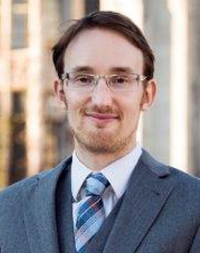 Stuart Michael McManus
Stuart Michael McManus
Chinese University of Hong Kong/University of Chicago
Stuart M. McManus is an historian and classicist working on pre-modern Hispanic culture from a global and multi-ethnic perspective. He received his Ph.D. in history (secondary field in classical philology) from Harvard, and is currently Assistant Professor of Pre-Modern World History at the Chinese University of Hong Kong. Prior to this, he taught Mexican and ancient Mediterranean history at the University of Chicago, where he was the inaugural postdoctoral fellow at the Institute on the Formation of Knowledge.
Entangled Slave Regimes in the Early Modern World
“Entangled Slave Regimes in the Early Modern World” seeks to make two main interventions. First, it will be the first study of early modern Iberian slavery from a global, rather than a proto-national or regional perspective. As such, it will treat the connected histories of the slave regimes of Spain and Portugal in the Atlantic, the Pacific, the Indian Ocean and the South China Sea, and their symbiotic relationship with the slave systems of early modern Africa, Asia and the Americas. Second, the book will address the wholly unstudied interactions between Iberian concepts of slavery, dependency, freedom and “just war” and those of other parts of the world by focusing on the moment when enslaved people crossed the borders of slave regimes, as well as non-European impressions of Iberia’s Neo-Roman slave law and vice versa. In this way, this study will test the widely accepted dichotomy, popularized by Orlando Patterson, between western and non-western ideas of slavery and freedom, with the former’s sharp distinction between the two socio-legal statuses generating both the horrors of the Transatlantic Slave Trade and the strong attachment in western societies to personal freedom.
Report and Updates
Thanks to a Humboldt Yale History Network Travel Grant, I was able to spend one month in Lisbon conducting preliminary research on my new book project, tentatively entitled “Entangled Slave Regimes in the Early Modern World.” There, I spent time working in some of the leading collections for the study of slavery in Portuguese Asia, including the Arquivo Histórico Ultramarino (AHU), the Biblioteca da Ajuda (BA), the Biblioteca Nacional de Portugal (BNP) and the Arquivo Nacional de Torre do Tombo (ANTT), where I examined materials relating to the intellectual and related social history of slavery in Iberian Asia. This involved examining both previously studied unique manuscript sources and delving into the archives to try to find new documents that might shed light on Ibero-Asian slavery, and the interactions between Western and non-Western concepts of slavery and freedom. In all this, the librarians and archivists of the various collections offered me invaluable assistance, directing me to the many handwritten eighteenth-century catalogs that often still represent the best guides to these rich collections. I also benefitted from the assistance of various local scholars, including Drs Paulo Jorge de Sousa Pinto, Miguel Rodrigues Lourenço, Pedro Pinto, Pedro Cardim and other members of CHAM at the New University of Lisbon, the world’s leading center for the study of Portuguese overseas expansion.
 During my stay, I uncovered a number of previously unstudied sources that shed light on the connected and comparative history of early modern slavery. In the AHU, I came across a large number of eighteenth-century proclamations and merchant accounts relating to the trade in Chinese slaves, as well as several documents that bespeak the extent to which Macau was subject to the jurisdiction of the mandarins of Guangzhou Province. In the BNP, I was able to spend time examining the best surviving manuscript copy of the most extensive Jesuit treatise on slavery in Iberian Asia, Gomes Vaz’s De mancipiis Indicis (discussed in the two publications listed below), as well as to inspect some of the documents related to the Goan Inquisition, which frequently tried slaves. In the BA, among my most interesting finds was a series of seventeenth-century certificates of sale for Chinese slaves in Macau, which stipulated the exact circumstances and terms under which they were sold. One of these reveals that even mandarins sometimes sold Chinese bondservants to the Portuguese, although this was against official policy, especially if they were likely to be transported beyond China. As these certificates were kept by their Portuguese owners and amended when the slaves were sold on, they also allow us to track the trade in Chinese slaves from Macau to Malacca and beyond. Finally, in ANTT I found further evidence of Chinese slaves beyond Macau, this time in Goa, where in 1626 a Portuguese official investigated the case of a female Chinese slave apparently beaten to death by the wife of her owner.
During my stay, I uncovered a number of previously unstudied sources that shed light on the connected and comparative history of early modern slavery. In the AHU, I came across a large number of eighteenth-century proclamations and merchant accounts relating to the trade in Chinese slaves, as well as several documents that bespeak the extent to which Macau was subject to the jurisdiction of the mandarins of Guangzhou Province. In the BNP, I was able to spend time examining the best surviving manuscript copy of the most extensive Jesuit treatise on slavery in Iberian Asia, Gomes Vaz’s De mancipiis Indicis (discussed in the two publications listed below), as well as to inspect some of the documents related to the Goan Inquisition, which frequently tried slaves. In the BA, among my most interesting finds was a series of seventeenth-century certificates of sale for Chinese slaves in Macau, which stipulated the exact circumstances and terms under which they were sold. One of these reveals that even mandarins sometimes sold Chinese bondservants to the Portuguese, although this was against official policy, especially if they were likely to be transported beyond China. As these certificates were kept by their Portuguese owners and amended when the slaves were sold on, they also allow us to track the trade in Chinese slaves from Macau to Malacca and beyond. Finally, in ANTT I found further evidence of Chinese slaves beyond Macau, this time in Goa, where in 1626 a Portuguese official investigated the case of a female Chinese slave apparently beaten to death by the wife of her owner.

Finally, the grant also allowed me to present my work to the members of CHAM who provided invaluable feedback, both relating to the project as a whole and specific sources I am using. These insights and professional connections will stand me in good stead when I return to Lisbon in 2021 thanks to a recently-announced Early Career Scheme Grant from the Research Grants Council of Hong Kong.
Publications & Presentations
“Servitutem Levem et Modici Temporis Esse Arbitrantes: Jesuit Schedulae and Japanese Limited-Term Servitude in Gomes Vaz’s De mancipiis Indicis,” forthcoming (in press) in Bulletin of Portuguese Japanese Studies (2018).
“Partus Sequitur Ventrem: Gender, Reproduction and Slavery in Early Modern Portuguese Asia” forthcoming (solicited for special issue) Gender & History (2020).
“Comparative Slave Law in Portuguese Asia and the Origins of Global Abolitionism,” Seminário Permanente «Economias, agentes e culturas mercantis», New University of Lisbon, June 2019.
Publications
“The Bibliotheca Mexicana Controversy & Creole Patriotism in Early Modern Mexico,” Hispanic American Historical Review, 98.1 (2018), 1-41.
“Eloquence & Ethnohistory: Indigenous Loyalty, Chinese Treachery & the Making of a Tagalog Letrado,” Colonial Latin American Review, 27.4 (2018), 522-574 (with Dana Leibsohn).
“Imperial History without Provincial Loyalty? Reading Roman History in Renaissance Japan,” KNOW: A Journal On the Formation of Knowledge, 3.1 (2019), 123-157.
“Humanismo en la ciudad mundial: Gaspar de San Agustín,” Revista de Crítica Literaria Latinoamericana, 87.2 (2018), 111-130.
“The Art of Being a Colonial Letrado: Learned Sociability & Urban Life in Eighteenth-Century Mexico City,” Estudios de Historia Novohispana, 56 (2017), 40-64.
 Eva Mehl
Eva Mehl
University of North Carolina Wilmington, USA
Eva Maria Mehl is an associate professor of Latin American history at the University of North Carolina Wilmington (Ph.D. UC Davis, 2011; Ph.D. University of Alicante, Spain, 2002). She is the author of Forced Migration in the Spanish Pacific World: From Mexico to the Philippines, 1765-1811 (Cambridge University Press, 2016). Under her maiden name, Eva M. St. Clair Segurado, she has published extensively in Spain on the missionary labor of the Jesuits in China and the expulsion of this religious order from Mexico in 1767.
Expanding (and Raveling) Boundaries: Spanish Augustinian Missionaries in China in the Late Seventeenth and Early Eighteenth Centuries
My project centers on the establishment of an apostolic presence by the Spanish Augustinian missionaries in southern China between 1680 and the 1720s, a time when the Catholic China mission reached its climax in terms of the numbers of converts and the concentration of missionaries of different nationalities. My sources come from the Lilly Library in Bloomington, Indiana, and two Spanish archives: the archive of the Augustinian Province of the Philippines in Valladolid and the General Archive of the Indies in Seville. My working thesis is that, while multiple actors participated in the Spanish Catholic China mission (Pope, monarchs, governors of the Philippines, Council of the Indies, private donors, and the Chinese emperors), the agency of the missionaries was a fundamental piece in this endeavor. This project revisits some stereotypes about the historical significance of mendicant orders in China, especially the not-well-known Augustinian order, in the context of a historiography of evangelization of European empires that has been statistically dominated by the literature on the Society of Jesus. Ultimately, by studying the Augustinian enterprise in China I intend to explore the early modern missionary culture, the far-reaching connections of a Spanish empire committed to expand Catholicism beyond its political boundaries, and the global awareness of historical actors.
Report and Updates
Last summer I spent about 2 weeks of archival research in Valladolid and Seville that has significantly contributed to the progress of my current research project. I spent 3 days (July 15, 16, 17) at the Archivo del Museo Oriental de Padres Agustinos de Valladolid (Valladolid, Spain) [Archive of the Oriental Museum of the Augustinian Fathers of Valladolid]. Here I was able to consult and photograph documents produced by the Augustinian order and its members from the late 1600s to the early 20th century. More importantly for the chronological span of my research project, I found about a dozen letters written by the members of the first successful Augustinian mission to China. This was established in the 1680s and remained legally in the empire until approximately 1714 when a string of dramatic changes in Chinese imperial attitudes and diplomatic mishaps with European representatives led to the downfall of Christianity and Christian missionaries in China, most of them being expelled at that time. Particularly significant for my investigation is that this archive also houses several reports on the status of the missions in the 18th century. The historiography on the topic has traditionally assumed that the mission never recovered and that missionary activity pretty much ceased from 1720s on. However, these documents shed light on the evolution of the fragile (and by then, clandestine) Augustinian mission in the aftermath and demonstrate that missionaries struggled to remain in China and conduct operations in the midst of plenty of hardships: lack of manpower, support, books, and money, and a myriad of difficulties in having the Christian message penetrate the Chinese in an environment where they lacked support and Christianity lacked legitimacy in the Chinese political and cultural context. Finally, I was able to consult some documentation as well on attempts to reinstate the Augustinian mission in the 1800s, a material that, for now, falls out of the scope of my work.

My next stop was Seville. At the Archivo General de Indias [General Archive of the Indies] I was not allowed to take pictures of the documents, so I planned for a longer stay than Valladolid, from July 19 through the 26. This repository allowed me to delve into the official perspective on the story of Spanish Catholicism in China and hence complement the missionary viewpoint. At this site I read and transcribed accounts that the superiors of different Spanish Catholic missions in China, as well as captain generals of the Philippines, sent to Madrid reporting on the status of missionary personnel, supplies, baptized Chinese, and houses. But without question, the most important set of documents that I consulted in this archive were those produced by several royal offices that were in charge of renewing the annual royal subsidy to different religious orders in China after 1720. Royal subsidies were extended well into the 1780s, which speaks volumes of the long-lasting will of the Spanish crown to support such an enterprise despite obvious and serious challenges. A similar conclusion can be drawn from other documents I reviewed of different royal councils and Spanish ambassadors to Rome that describe in detail petitions to the Pope to protect the Spanish missions in China.

The investigation conducted at these two sites will allow me to significantly advance my research project along the path of writing my second book in the United States.
 Sarath Pillai
Sarath Pillai
University of Chicago, USA
Sarath Pillai is a PhD Candidate in History at the University of Chicago. His PhD dissertation examines the currency of federalist ideas in colonial South Asia in the 1920s through 1940s. His research is informed by legal and constitutional history, postcolonial studies, sovereignty studies, histories of empire, nationalism, and decolonization. He holds a Master of Studies in Law (MSL) from Yale Law School and an MA in History from the University of Delhi among others. His publications include “Fragmenting the Nation: Divisible sovereignty and Travancore’s quest for federal independence,” Law and History Review (August, 2016).
Decolonizing the Empire by Treaties: Indian Princely States and the Quest for a Federal India
My project studies the rise of federalist ideas in indirectly ruled parts of the British empire in the 1920s through 1940s. It focuses on the federalist advocacy of the Indian princely states, which had treaty relations with the British, for an all-India federation consisting of directly ruled British provinces and indirectly ruled princely states. In colonial South Asia, nation-state and federation were two rival projects grounded in the political and legal thought engendered by a Manichean empire consisting of direct and indirect British rule. My project will throw into sharp relief the politico-legal bases of these competing state-making projects in decolonizing India. The eventual success of the argument for nation-state, in many ways, led to the partition of the subcontinent and the establishment of a centralized unitary state in India. The historiographical hold of the nation-state in decolonizing South Asia is such that there is hardly any study on the colonial lives of federalist thoughts in South Asia and the alternative visions of postcolonial statehood that they fostered. Furthermore, this project also situates federalist ideals in colonial India in the larger context of British imperial political thought and constitutionalism on the one hand, and ideas of federation in USA, imperial Germany, Canada, French Africa, and British Malay on the other.
Report and Updates
At present, I am engaged in dissertation research in England, which is partly funded by the Humboldt-Yale History Network Travel grant. I am in the last phase of a 3.5-month long research stint in the UK, which will draw to a close on 15th May 2019. The HY grant lent me the much-needed financial support to complete this long, yet very crucial, research phase in the UK. I have been based in London and have largely been working in the British Library. I have also made side-excursions to Cambridge and Oxford to consult various libraries and archives in both places. I could afford to stay in both places for a few nights, instead of coming back to London every night, primarily because of the support of the HY grant. While I have been in England I also attended the annual conference of the British association of southern Asian studies (BASAS) in Durham University in early April and will be attending the ASEN annual conference on Self-determination and nationalism in Edinburgh in the last week of April. Starting from next week, I will also be going regularly, for a week, to the National Archives, Kew Gardens. The UK phase of my research has turned out to be the most crucial in shaping the contours and arguments of my dissertation. When I go back to Chicago in June, after a brief research interlude in India, I will begin writing the thesis full-time and I hope to finish the writing in a year.
I am attaching below a few snaps I took during my research trips with a brief description:
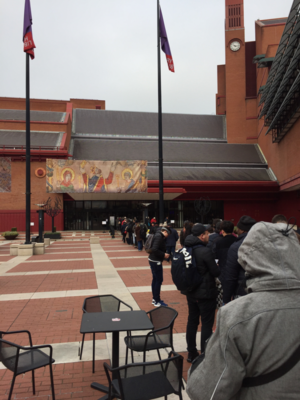


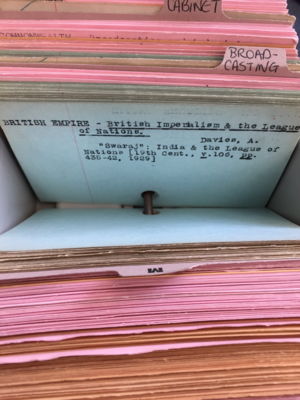
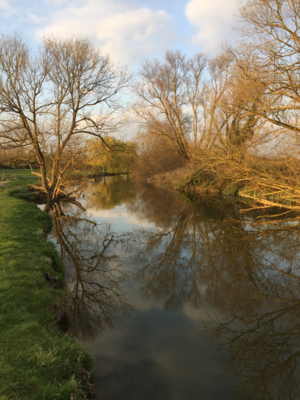
 Jakub Sypiański
Jakub Sypiański
Johannes-Gutenberg Universität Mainz, Germany
Jakub Sypiański’s research deals with intercultural encounters in the Eastern Mediterranean in the first centuries after the Islamic conquests. He holds degrees in Mediterranean Cultures from the University of Warsaw and in Medieval Mediterranean History from the University of Paris 1 Panthéon-Sorbonne, where he wrote two master theses, on the movement of scholars between Byzantium and Islamic lands, and on the social background to the first Constantinopolitan literary reactions to cultural challenges posed by Islam – topics on which he published articles thereafter. He studied and did research in Cairo, Athens and Istanbul and is currently a doctorate candidate at the Johannes Gutenberg University of Mainz.
Social and political context of intellectual exchanges between the Byzantine Empire and the Muslim world in C.E. 750-1000
My project aims to introduce social and political dimensions into the research of Arabo-Roman intellectual relations in various fields from medicine to astrology. I try to identify the social context behind the Arabic and Greek literary depictions of these exchanges and to understand in what way they were involved in and shaped by internal and foreign politics of rulers on one hand and in the popular religious prejudices on the other. I analyze the diffevent connotations of “foreign” origin of knowledge which were resulted from the immersion of scientific production into politics and religion. An important role in the Arabo-Byzantine intellectual interactions seems to have been played by the diplomatic rivalry, which is often the setting of various accounts of intellectual interactions. My research aims to answer the question of whether this a ”cultural rivalry” was a literary creation or rather an actual mode of communication in diplomacy between two cultures. In order to understand that better, I analyze the role of the Mediterranean “international court culture“ in shaping supranational modes of behavior of the elites and I investigate the social and political uses of possession of knowledge in both societies, because internal (in)compatibilities would facilitate/handicap usage of science in intercultural exchanges
Report and Updates
- Thanks to the travel grant I obtained an extremely important for my doctoral project on the social context on Arabo-Byzantine intellectual exchanges in the 8th-10th centuries. I used my grant to do research in Paris, where I work mostly on Byzantine material, and in Cairo, when I studied Arabic source material.
In Paris, I divided my time between the Byzantine Library of the College of France, the Library of Oriental Languages and Civilisation (BULAC, part of INALCO), and the Institute of Research and History of Texts (IRHT, part of CNRS). Paris reunites great research in both Byzantine and Arab history, a connection unrivalled elsewhere. With a long-existing and diligently updated collections, and containing also precious manuscripts or their reproductions (available as microfilms in the IRHT) the set of libraries and research institutes in Paris provides one of the best settings to do research on Arabo-Byzantine history. Besides spending my time there, I took the opportunity to discuss my research with Byzantinists and Arabists alike, most importantly prof. Mathieu Tillier, prof. Filippo Ronconi, prof. Anneliese Nef.
In Cairo, thanks to the hospitality of the monks at the Dominican Institute of Oriental Studies, I was able to work spend long hours in the most important Middle Eastern research library. The precious particularity of that collection is that one has access in the same place to not only to the fruits of both Western and Arabic research but also to the plethora of editions of Arabic texts. In the field of studies where references are often given to obscure editions of medieval texts, sometimes without date and/or place of publication, the extensiveness of this unique collection is truly invaluable. During my stay there I obtained access to Arabic material that otherwise would be completely out of reach, for example, old editions of such under-studied authors as an-Našiʾ al-Akbar or al-Ḥuṣrī. The researchers at the institute, created not only a most pleasant atmosphere inside of the convent, but are also an inextinguishable source of advice, expertise and intellectual stimulation. Conversations with dr fr. Jean Druel, a specialist in the early history of Arabic grammar significantly improved my reflection on the parallels between Byzantine and Islamic education.
- Jakub Sypiański, “Paideia et adab. Quelques remarques préliminaires,” to be published by Brill in the proceedings of the conference “L’adab, toujours recommencé : « Origines », transmission et métamorphoses“ at Inalco in Paris (2016) in a volume edited by Luca Aldo Patrizi.
 Timothy Wright
Timothy Wright
University of California, Berkeley, USA
Dr. Timothy Wright is a historian of Early Modern Europe, with a focus on Christianity, Intellectual History, and the movement of people and ideas across the Atlantic World. Dr. Wright completed his PhD at UC Berkeley in August, 2018 with a dissertation titled “Hidden Lives: Asceticism and Interiority in the Late Reformation, 1650-1745”. The dissertation examined the debates surrounding ascetic practice, as well as the endeavors to reintroduce them into the Protestant tradition, across the seventeenth- and eighteenth centuries. In fall 2018, Dr. Wright will be a visiting researcher at the Max Planck Institute for Human Development in Berlin.
Rituals of the Reborn: Ascetic Protestantism and Alternative Christianities in the Atlantic World, 1680-1780
My research explores the diverse responses to a crisis in Protestant religion and culture in the mid-seventeenth century, a crisis borne from the unsettled question of what role ascetic practices should play in the Reformation tradition. Despite Luther and Calvin doing away with monastic devotion, large numbers of Protestants continued to feel the call to renounce the secular world to live holy lives through celibacy, solitude, prayer and self-denial. This ascetic revival ultimately gave rise to a new type of experimental Protestant community of contemplative, withdrawn, and celibate men and women. Centered in Amsterdam, northern Germany, and ultimately in multiple colonies in North America, this devotional form stood at odds with mainstream Protestant culture.
With the help of the Humboldt Yale grant, I will examine the European roots of two ascetic communities that eventually settled in North America. The first is a circle of apocalyptic hermits led by the mystic Johannes Kelpius that settled just outside Philadelphia in the 1690s. To understand the formation of this group, I will travel to archives in Berlin and Halle (Germany). The second community is that of the French Catholic turned Calvinist, Jean de Labadie and his itinerant community of apostolic Christians. This group practiced communal property, self-denial, and is often cited as an important influence on later Pietist reformers. Their records will take me to the Hague and Amsterdam.
Report and Updates
For the last two months, I have been conducting research on my project “Rituals of the Reborn: Ascetic Protestantism and Alternative Christianities in the Atlantic World, 1680-1780” in archives in Philadelphia, Annapolis, and Washington D.C. My project focuses on the dissemination of ascetic practices and theology among radical Protestants around the Atlantic World in the years around 1700. This period sawa revival of interest among Protestants of all stripes in practices such as celibacy, solitary withdrawal, poverty, and contemplative prove, as a means to achieve greater holiness in living and communion with God. I argue that the widespread nature of the phenomenon requires us to examine how we understand Protestant settlement and civilization in the Atlantic as such ascetic impulses influenced the shape settlements took, their relations with others, as well as the role of women and authority.
Of particular interest in my research so far have been the sources I am using and discovering in relation to the practices of two groups, that of the ‘Ephrata Cloister’ which flourished in the 1730s and 40s in frontier Pennsylvania, and a reclusive circle of mystical hermits led by Johannes Kelpius in the 1690s near Philadelphia. With Ephrata, the group’s creation of a Protestant neo-monastic devotion replete with monastic robes, tonsuring, and communal orders is a fascinating example of how ascetic theology—adopted for its inward, spiritual promise—could also spawn outward practices borrowed from Catholicism. In numerous sources depictions of Ephrata’s monastic robes can be seen and analyzed. In the chronicle kept by the order of sisters, The Rose of Saron, and an aid for grammer both located at the Historical Society of Pennsylvania, pen and ink sketches show women clad in long flowing, white robes with hoods and veils. The chronicle describes their purpose as “muffling the mortal body” and “instruments of spiritual martyrdom.” Another source contains images of the men’s orders clothing which are in turn described as imitating the Catholic Capuchin order clothing. I look forward to analyzing how such monastic practices at Ephrata shaped the role of women in worship, economic activities, and their relations with the generally anti-papal nature of colonial ecclesiastical authority.
With the hermits in Philadelphia led by Kelpius, I have found a number of fascinating sources at the Library Company that will hopefully shed light on the esoteric and alchemically-tinged practices of this sect. The Library Company possesses a number of works written by Kelpius on contemplative prayer (A Short, Easy and Comprehensive Method of Prayer), but also a number of books owned by Kelpius and his circle. One of these books, Cherubinischer Wandersmann was written by Angelus Silesius, a German mystic and Catholic convert who believed that mystical theology’s greatest truth was self-denial and the illumination and union it brought the believer with God. Kelpius’s circle strove to put such ideals into practice, holding society at a distance while they awaited the millenium.
While finishing my archival research, I am preparing a number of articles for publication. One of these includes a reflection on the early modern category of ‘inward’ devotion and how it should be revised based on the presence of such outward, ascetic practices among Protestants. The article will draw upon the many examples from my research trip made possible by the Humboldt Yale History Network Travel Grant.



